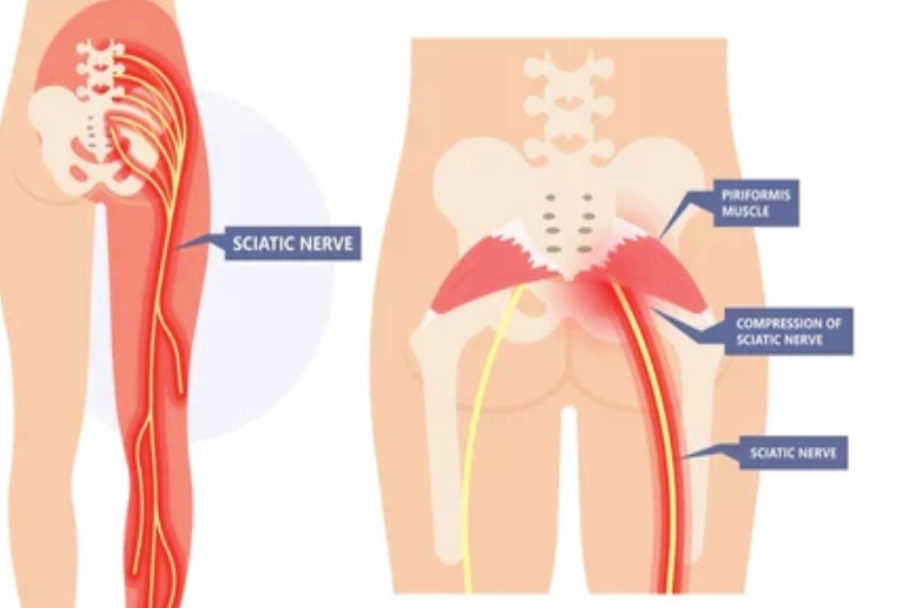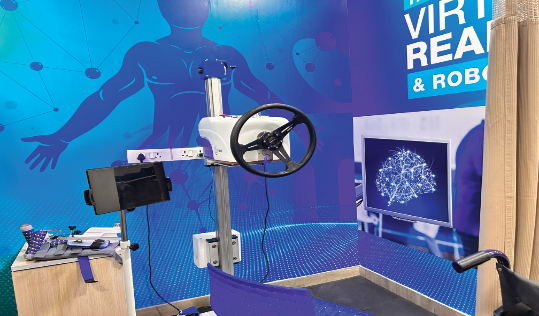WHAT WE TREAT
Piriformis Syndrome
Best Physiotherapist in Delhi
Dive into the world of Piriformis pain and explore its causes, symptoms, and practical management techniques. Discover how physiotherapy can play a crucial role in relieving the pain and discomfort associated with this condition.
Discover the benefits of manual therapy and manipulative therapy
Piriformis pain syndrome is a condition that often goes undiagnosed, causing pain and discomfort in the buttocks and lower back. In this comprehensive guide, we will delve into the causes, symptoms, and practical management strategies for Piriformis pain syndrome, highlighting the vital role of physiotherapy in its treatment.
What Is Piriformis pain syndrome?
Piriformis pain syndrome is a neuromuscular condition that occurs when the piriformis muscle, a small muscle located deep in the buttocks, becomes tight or spasms. This muscle is essential for hip rotation, and when it compresses or irritates the sciatic nerve, it results in pain.

Common Causes
Understanding the causes of Piriformis pain syndrome is crucial for effective management:
- Muscle Tightness: The piriformis muscle can become tight due to excessive sitting, overuse, or muscle imbalances.
- Injury: Trauma to the buttocks or hip area can lead to muscle spasms.
- Anatomical Variations: Some individuals have a predisposition to Piriformis pain syndrome due to anatomical factors, such as the sciatic nerve passing through the muscle.
Recognizing the Symptoms
Identifying the symptoms of Piriformis pain syndrome is essential for early intervention:
- Pain: Patients typically experience pain in the buttocks, which can radiate down the back of the leg.
- Numbness and Tingling: Radiating pain is often accompanied by numbness and tingling in the affected leg.
- Muscle Weakness: Weakness in the leg and decreased range of motion can occur.
The Role of Physiotherapy in Piriformis pain syndrome Management
Physiotherapy offers effective strategies for managing Piriformis pain syndrome:
- Manual Therapy: Physiotherapists use hands-on techniques to alleviate muscle tension and reduce pain in the piriformis muscle.
- Stretching and Strengthening Exercises: Targeted stretches and exercises help improve the flexibility and strength of the piriformis muscle, reducing pressure on the sciatic nerve.
- Heat and Cold Therapy: Applying heat or cold packs can relieve pain and inflammation in the affected area.
- Postural Corrections: Physiotherapists assess and correct posture to prevent further strain on the piriformis muscle.
- Gait Analysis: Analyzing the patient’s walking pattern helps identify any abnormalities that may contribute to the condition.
Prevention and Lifestyle Modifications
Preventing Piriformis pain syndrome and managing its symptoms require a proactive approach:
- Regular Exercise: Engage in regular physical activity to maintain overall muscle strength and flexibility.
- Proper Warm-up: Prior to exercise, ensure a thorough warm-up to reduce the risk of muscle spasms.
- Ergonomic Workstations: Maintain a comfortable and ergonomic workspace to avoid excessive sitting and muscle strain.
- Stretching Routine: Incorporate stretching exercises into your daily routine to prevent muscle tightness.
- Regular Breaks: If your job requires prolonged sitting, take regular breaks to walk and stretch.
Seeking Professional Help
If you suspect or experience symptoms of Piriformis pain syndrome, seeking professional assistance is essential. A physiotherapist can conduct a thorough assessment, provide targeted treatments, and design a personalized exercise plan.
Piriformis pain syndrome can be a source of considerable discomfort, but with the right management techniques and early intervention, individuals can find relief. By understanding the causes, recognizing the symptoms, and embracing physiotherapy as an effective treatment option, those affected by piriformis syndrome can regain their quality of life and reduce pain.

Cutting-Edge Technology
Our commitment to using the best technology extends to various aspects of physiotherapy:
- Robotic Assistance: We employ robotics for gait training, aiding patients with mobility impairments. These devices facilitate improved motor control and muscle activation.
- Electrotherapy: Techniques like TENS, IFT, and Ultrasound Therapy are used to target pain relief and accelerate tissue healing.
- Virtual Reality (VR): We utilize VR and interactive gaming for engaging and enjoyable rehabilitation, increasing patient motivation and compliance with treatment.
Frequently Asked Questions
Reach out to us if you have further Questions - We're here to help!
Q1: Can piriformis syndrome go away on its own?
A1: In some cases, mild Piriformis pain syndrome symptoms may resolve with rest and self-care. However, seeking professional help for a proper diagnosis and treatment plan is recommended for severe or persistent symptoms.
Q2: How long does it take to recover from Piriformis pain syndrome with physiotherapy?
A2: Recovery time varies based on the individual and the severity of the condition. Physiotherapy can provide significant relief within a few weeks to a few months.
Q3: Is surgery necessary for Piriformis pain syndrome?
A3: Surgery is rarely needed for Piriformis pain syndrome. Most cases can be effectively managed through conservative treatments, such as physiotherapy.
Q4: Can piriformis syndrome recur after treatment?
A4: Yes, it’s possible for Piriformis pain syndrome to recur, especially if the underlying causes, such as poor posture or muscle imbalances, are not addressed. A physiotherapist can help prevent recurrence with a tailored exercise plan.
Q5: Can piriformis syndrome cause sciatica?
A5: Yes, Piriformis pain syndrome can lead to sciatic nerve compression, resulting in sciatica symptoms such as radiating leg pain, numbness, and tingling.
Have Questions or Need Assistance?
Don’t hesitate to reach out to us:
Book Appointment with Experts
- Call/WhatsApp: +9818911195
- Book Appointment with Experts
We are here to lend our support on your journey toward improved movement and overall well-being.
See all Blogs & Articles
See all Conditions we Treat
Note: Content provided here is for informational purposes only and is not a substitute for professional medical advice or diagnosis. If you believe you are experiencing pain or any other health-related issue, it is important to seek the advice of qualified healthcare professionals for a proper evaluation and treatment plan.
See all How it Works.


